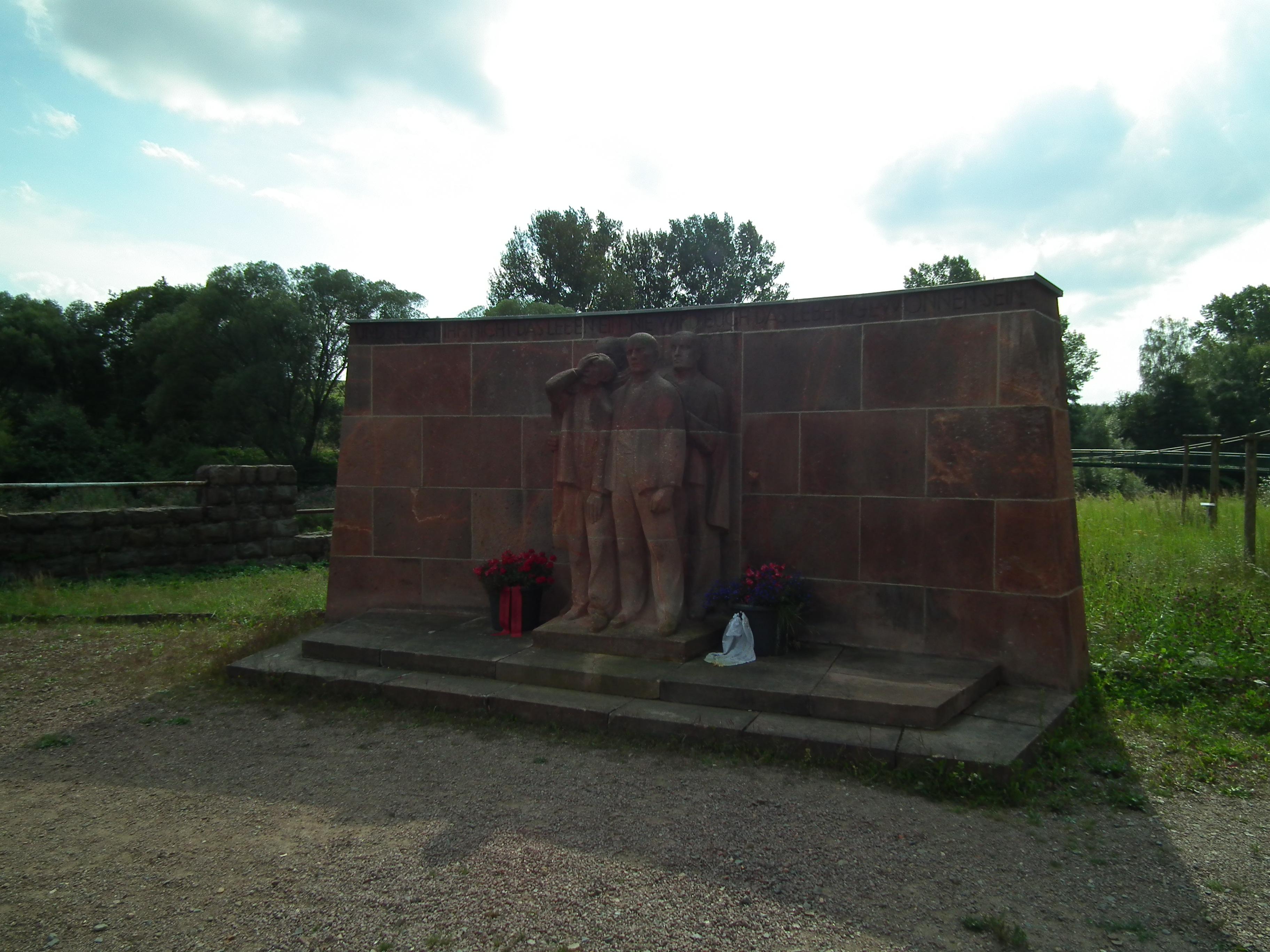Sachsenburg concentration camp on:
[Wikipedia]
[Google]
[Amazon]


 Sachsenburg was a
Sachsenburg was a
Along with Lichtenburg (concentration camp), Lichtenburg, it was among the first to be built by the Nazis, and operated by the SS from 1933 to 1937. The camp was an abandoned four-story textile mill which was renovated in May 1933 to serve as a "protective custody" facility for dissidents such as
Article about Sachsenburg
(2006)
Website Gedenkstätte Sachsenburg
Nazi concentration camps in Germany Buildings and structures in Saxony Frankenberg, Saxony {{Saxony-struct-stub


 Sachsenburg was a
Sachsenburg was a Nazi
Nazism ( ; german: Nazismus), the common name in English for National Socialism (german: Nationalsozialismus, ), is the far-right totalitarian political ideology and practices associated with Adolf Hitler and the Nazi Party (NSDAP) in ...
concentration camp
Internment is the imprisonment of people, commonly in large groups, without charges or intent to file charges. The term is especially used for the confinement "of enemy citizens in wartime or of terrorism suspects". Thus, while it can simply ...
in eastern Germany
Germany,, officially the Federal Republic of Germany, is a country in Central Europe. It is the second most populous country in Europe after Russia, and the most populous member state of the European Union. Germany is situated betwe ...
, located in Frankenberg, Saxony
Saxony (german: Sachsen ; Upper Saxon: ''Saggsn''; hsb, Sakska), officially the Free State of Saxony (german: Freistaat Sachsen, links=no ; Upper Saxon: ''Freischdaad Saggsn''; hsb, Swobodny stat Sakska, links=no), is a landlocked state of ...
, near Chemnitz
Chemnitz (; from 1953 to 1990: Karl-Marx-Stadt , ) is the third-largest city in the German state of Saxony after Leipzig and Dresden. It is the 28th largest city of Germany as well as the fourth largest city in the area of former East Germany a ...
br>Along with Lichtenburg (concentration camp), Lichtenburg, it was among the first to be built by the Nazis, and operated by the SS from 1933 to 1937. The camp was an abandoned four-story textile mill which was renovated in May 1933 to serve as a "protective custody" facility for dissidents such as
Jehovah's Witnesses
Jehovah's Witnesses is a millenarian restorationist Christian denomination with nontrinitarian beliefs distinct from mainstream Christianity. The group reports a worldwide membership of approximately 8.7 million adherents involved in ...
, who opposed the Nazi regime.
Sachsenburg was the first concentration camp in which SS used colored triangles sewn onto clothing, as well as armbands, to identify categories of prisoners. Details about the operation of Sachsenburg, held in 17 files (each containing several hundred SS reports) by the International Tracing Service
The Arolsen Archives – International Center on Nazi Persecution formerly the International Tracing Service (ITS), in German Internationaler Suchdienst, in French Service International de Recherches in Bad Arolsen, Germany, is an international ...
, only became available to researchers in late 2006.
Indians
The Spanish author Emilio Calderón claims in his novel "La Bailarina y el Inglés" that in the town of Frankenberg the Nazis had a broadcasting facility that helpedSubhas Chandra Bose
Subhas Chandra Bose ( ; 23 January 1897 – 18 August 1945
*
*
*
*
*
*
*
*
*) was an Indian nationalist whose defiance of British authority in India made him a hero among Indians, but his wartime alliances with Nazi Germany and Imperia ...
, the assigned leader of India after the Endsieg, to propagate his ideological views to his countrymen all over the globe (see: ''La Bailarina y el Inglés'' by Emilio Calderón, ed. Grupo Planeta, Barcelona 2009). Bose was open to take help of Nazi's and Japanese for Indian freedom movement and followed the principle of "Enemy of the Enemy is your Friend". The "Corps Freies Indien" and other Indian pro-independence organizations are supposed to have been centered there.
This is made more precise by the ''Lexikon der Deutschen Wehrmacht'': the authors explain in their respective article that Frankenberg was only the second location of the Indian Legion, as they call it, after it had been founded. Later it was moved to another place near Dresden
Dresden (, ; Upper Saxon: ''Dräsdn''; wen, label=Upper Sorbian, Drježdźany) is the capital city of the German state of Saxony and its second most populous city, after Leipzig. It is the 12th most populous city of Germany, the fourth larg ...
because Frankenberg was too small a military training ground to host a unit that was meant to grow up to the size of two battalions.
Interned people
*Alfred Kästner
Alfred Kästner (12 December 1882 – 12 April 1945) was a German communist and resistance fighter against Nazism.
Biography
Kästner was born in Leipzig. He was a wood merchant by profession, and a member of the Spartacus League. In Novem ...
See also
*Lichtenburg concentration camp
Lichtenburg was a Nazi concentration camp, housed in a Renaissance castle in Prettin, near Wittenberg in the Province of Saxony. Along with Sachsenburg, it was among the first to be built by the Nazis, and was operated by the SS from 1933 to ...
References
External links
Article about Sachsenburg
(2006)
Website Gedenkstätte Sachsenburg
Nazi concentration camps in Germany Buildings and structures in Saxony Frankenberg, Saxony {{Saxony-struct-stub